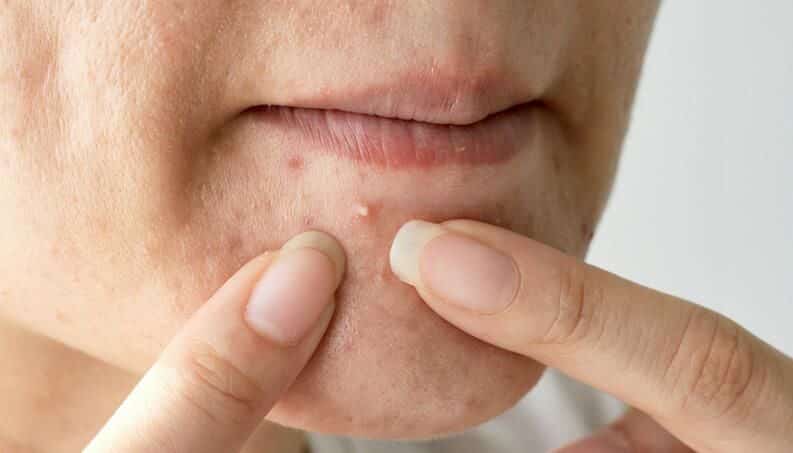There are different types of pimples and each one requires special treatment. So, understand the differences between acne and types of prevention.
Acne is a skin disease that occurs, in most cases, due to hormonal changes, therefore, it tends to occur mainly during adolescence or pregnancy. There are different types of pimples, which can present different forms, such as, for example, skin lesions, papules, pustules and blackheads.
Females are the most affected by acne and treatment varies according to the type of pimple present in each person, this is because, in some cases, it is only necessary to use specific products and, in others, it is even indicated to performing surgeries.
Furthermore, it is worth noting that poor diet and stress are also factors that help in the appearance of different types of pimples on the face. Therefore, always remember the importance of eating healthy foods and exercising.
Furthermore, check out the different types of acne and their treatments below.
Types of pimples and treatments
Acne Grau I
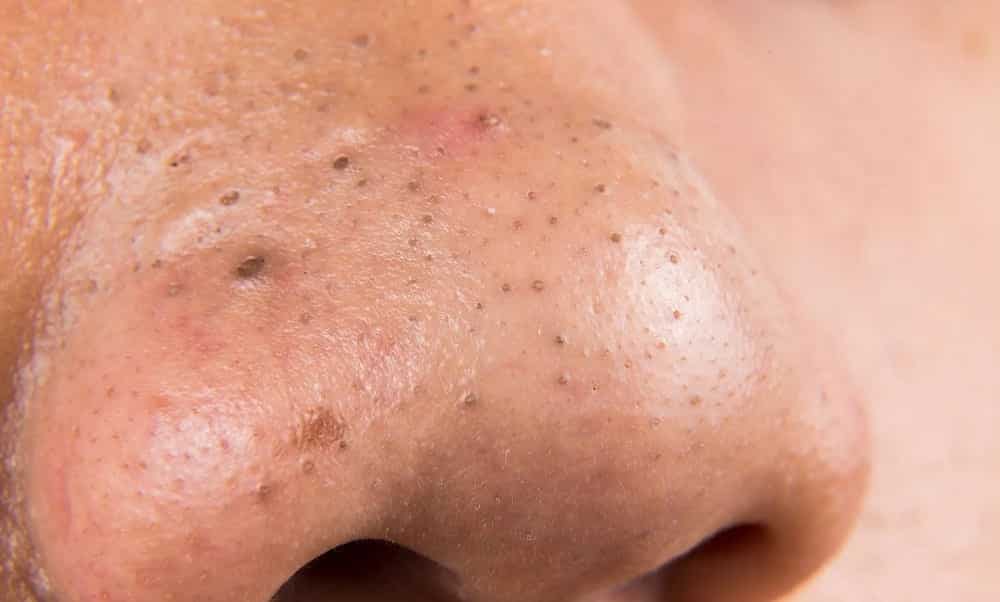
Grade one acne is non-inflammatory, characterized only by blackheads. So this is the initial step. This type of pimple is the most common and usually occurs during puberty.
Treatment: Grade I acne can be treated using facial soaps, creams or topical lotions. This type of acne can be treated using topical creams or lotions that generally contain sulfur and salicylic acid.
Acne Grau II
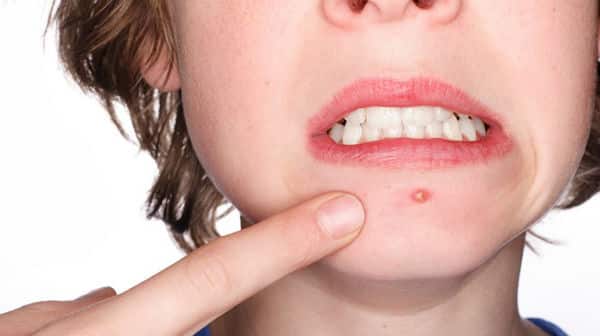
Scientifically called papulo-pustular acne, this type is popularly known as pimple and is characterized by rounded elevations on the skin that contain pus and are reddish and, in some cases, even painful.
The cause of this type of pimple arises due to the proliferation of microorganisms in the sebaceous glands, such as the bacterium Propionibacterium acnes.
Treatment: To treat grade II acne, it is important to follow the advice of a dermatologist, who, in most cases, recommends the use of antibiotics or skin gels.
Acne Grau lll
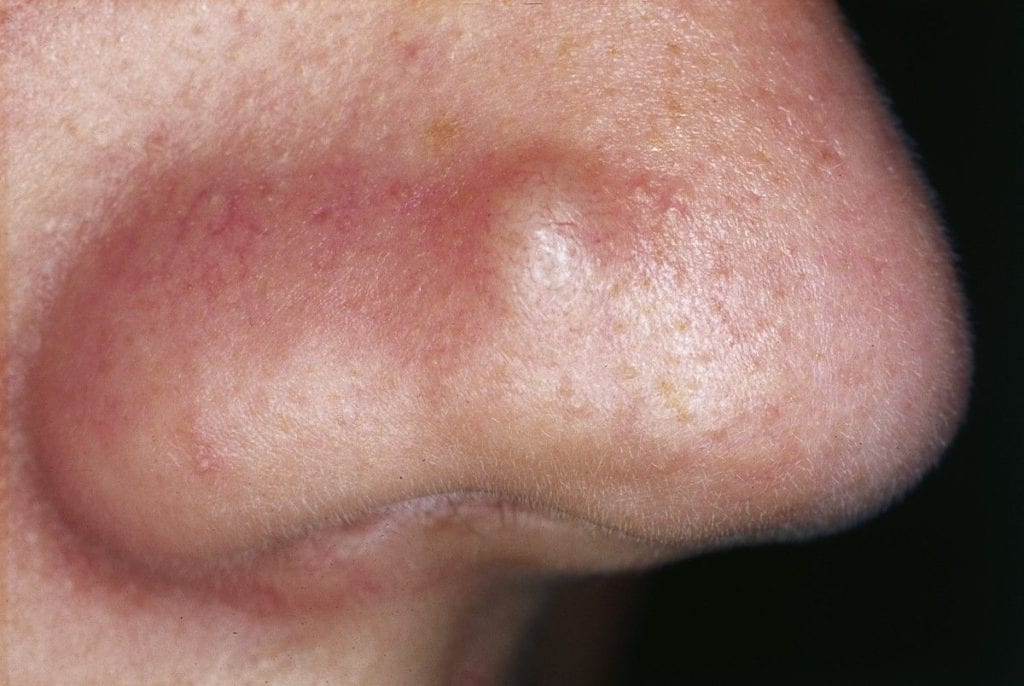
Called nodulocystic acne, this type is popularly known as internal pimple. They are deeper, painful, red and very inflamed.
This type of pimple appears due to hormonal changes related to adolescence or during the menstrual period.
Treatment: It is recommended not to squeeze or squeeze grade 3 acne. Furthermore, as with grade 2 acne, you must seek the help of a dermatologist to carry out the treatment.
Acne Grau IV

Known scientifically as conglobata, this type of pimple is characterized by lesions and formations of pus, which, in fact, can cause deformation of the skin.
Treatment: It is essential that the patient seek help from a dermatologist in this case. However, the most appropriate treatment, in most cases, is with the medication Roaccutane.
Acne Grau V
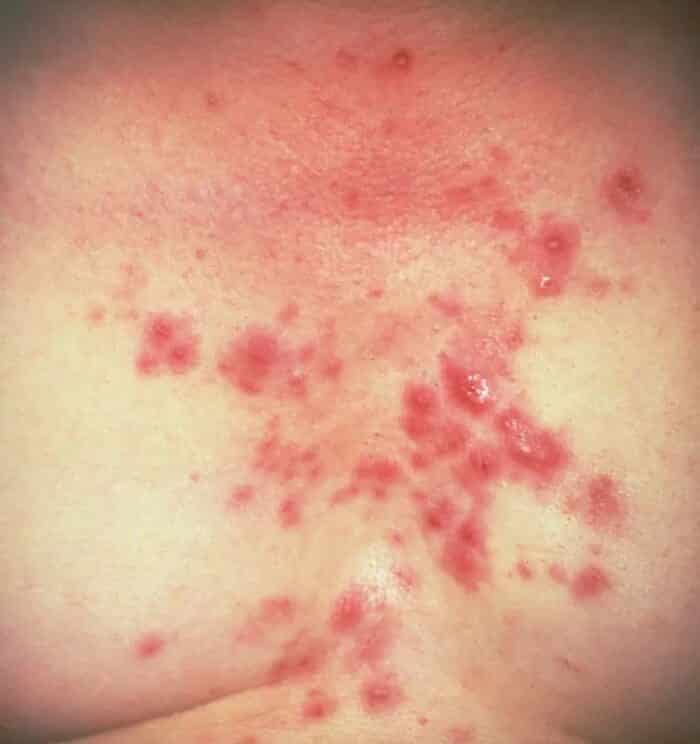
This type of pimple is scientifically known as acne fulminans. It is characterized by pimples and skin lesions, as well as symptoms such as fever, joint pain and malaise.
Although very rare, this acne tends to occur more in men and appears on areas of the body such as the chest, back and face.
Treatment: In addition to the dermatologist, in this case, it is important that the person seeks out a general practitioner. Treatment may vary according to the severity of symptoms, and the use of medication or even surgery may be recommended.
Spine types: Neonatal

Neonatal acne is where blackheads appear on babies’ faces. This type of pimple occurs mainly due to the exchange of hormones between the mother and the baby during pregnancy.
Treatment: Neonatal acne normally does not require treatment, as it disappears spontaneously at 3 months of age. However, it is important to maintain baby’s skin by regularly cleaning baby’s skin with neutral pH soap and water. Find out more about what to do in case of neonatal acne.
Pimple types: Medication
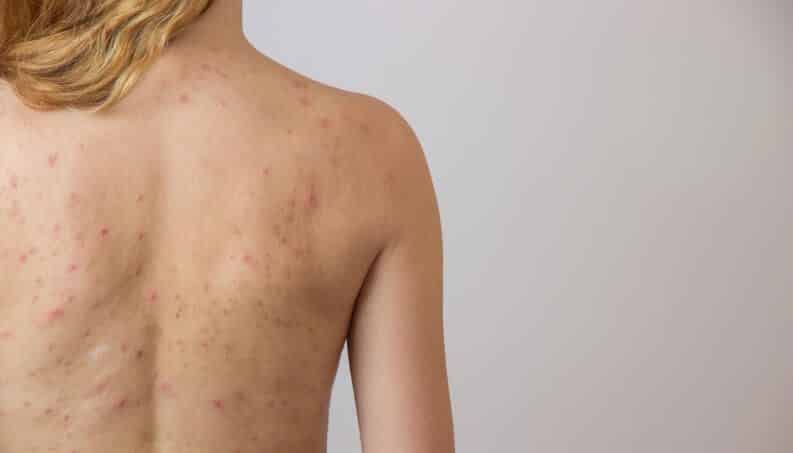
As the name suggests, this type of pimple appears due to the use of some specific medications, such as contraceptives, excessive vitamin B supplementation, hormonal treatments or cortisone.
Treatment: There are no guidelines for treating this type of pimple. However, our recommendation is that you contact the doctor who prescribed these medications and ask for them to be discontinued or the dosage changed.
Causes
Adolescence is the main factor in the appearance of pimples, because at this stage many hormonal changes occur.
Furthermore, stress and unprotected sun exposure are also factors that normally contribute to the proliferation of acne on the skin. Therefore, it is important to use sunscreen daily to protect against UV rays, in addition to practicing physical exercise to relieve stress.
It is also worth noting that poor diet and the intake of foods such as fried foods, chocolates and dairy products, cause an increase in skin oiliness, predisposing to the proliferation of bacteria, that is, pimples.
How to avoid types of pimples?
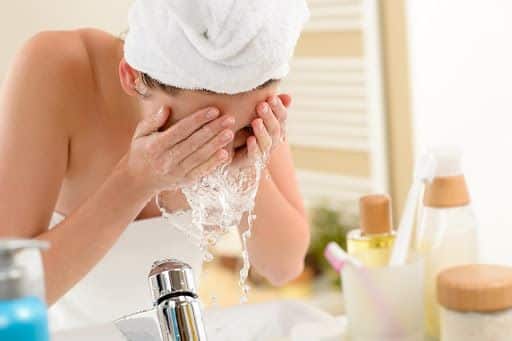
- Always keep your skin clean. It is recommended that you wash yourself, with appropriate products, at least twice a day;
- Use products such as micellar gels or lotions, which remove excess oil from the skin;
- Avoid processed and fatty foods. Drink plenty of water, fruit and vegetables;
- Try to apply masks like white clay, once a week;
- Avoid using cosmetics with oil and washing your face with hot water;
- Use sunscreen daily.
So, what did you think of this article? Take the opportunity to also check out: Squeezing pimples, what happens? Skin care and consequences.
Sources: Your health, Dermaclub, Health Atlas.
Image sources: VIX, R7, R7 2, Drauzio Varela, Health News, Mother’s hacks, VIX 2, Fiorucce, Verywell Health.

Sign up for our newsletter and stay up to date with exclusive news
that can transform your routine!
Warning: Undefined array key "title" in /home/storelat/public_html/wp-content/plugins/link-whisper-premium/templates/frontend/related-posts.php on line 12
Warning: Undefined array key "title_tag" in /home/storelat/public_html/wp-content/plugins/link-whisper-premium/templates/frontend/related-posts.php on line 13

